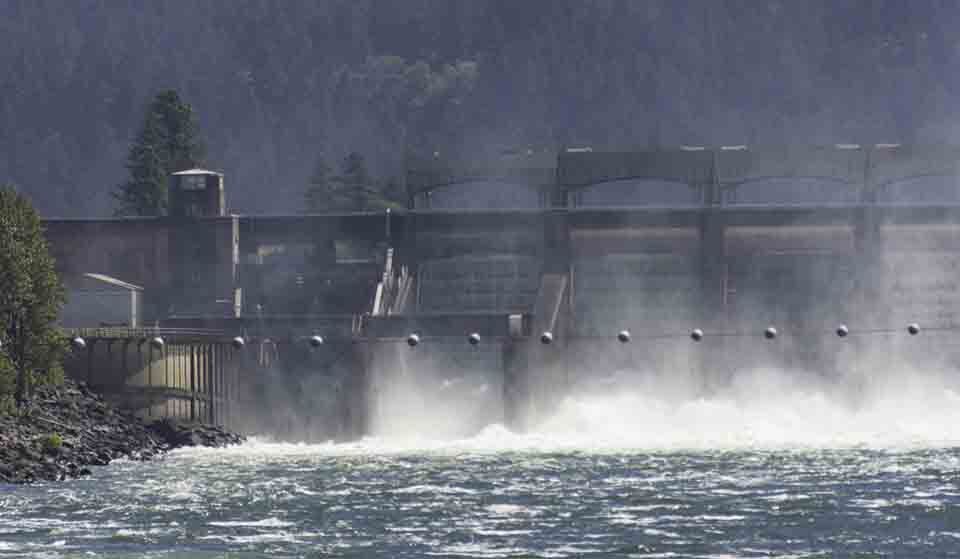Northwest Oregon Dams’ 2023 Power Generation At Lowest Level In 22 Years

Despite an increasing electricity demand, hydropower to generate electricity from Oregon and Washington dams dropped to historically low levels in 2023. Experts are predicting a further decline by the end of the year.
Data recently published by the U.S. Energy Information Administration shows hydroelectricity generation in the Northwest between October 1, 2022, and September 30, 2023, dropped to a 22-year low.
Oregon, Washington, and California are the three largest contributors to hydropower of the 11 Western states which produce up to 60% of the U.S.’s hydroelectricity. Of these Washington and Oregon produce over one-third of all hydropower nationally.
Hydropower In Oregon
With 150 hydroelectricity dams in the Columbia River Basin, that span parts of Oregon, Washington, Montana, Idaho, and Canada, the 18 hydroelectric dams on the main stem of the Columbia River and its primary tributary, the Snake River, these rivers ultimately generate power for 60% of people in the Northwest. According to the Bonneville Power Administration, the two rivers are responsible for 90% of renewable energy generation in the area.
While California doubled the amount of hydroelectricity generated because of its record rainfall and snowpack, Washington and Oregon generated 20% less hydroelectricity in 2023 than they did two years earlier. The Bonneville Power Administration, a federal agency tasked with marketing and coordinating all federally owned dams in the Northwest, credits this to natural phenomena.
They said low precipitation in the fall and winter, combined with the May 2023 so-called “heat dome” that sent temperatures soaring by 30ºF above average, rapidly melting snowpack, affected the rivers and streams traditionally fed steadily throughout the summer. Hydroelectricity relies on the water flowing relatively consistently and predictably.
Occurring during a period of historically high electricity demand that is anticipated to grow with manufacturing, transportation, and home energy increased demands, the drops in power production come at a time when there is a move away from fossil fuels and towards greener power. As more data centers are built in the Northwest, specifically in and around the Columbia River Basin, the drops in power production will be exacerbated by increasing electricity usage.
The Bonneville Power Administration predicts that data centers will more than double their power demand in Oregon and Washington over the next two decades.
The industry trade group Pacific Northwest Utilities Conference Committee agrees, projecting a 25% increase in demand for electricity in the region within the next decade. This is notwithstanding the 11% drop in generation in 2022 and 2023 compared with 2021 across the West, as shown by the data.
Effect Of Climate Change On Power Generation
High temperatures and heavy rains, combined with more frequent periods of drought, could further compromise hydroelectrical power production in the future. The Bonneville Power Administration confirmed that they have started taking recent climate changes into account when budgeting annual energy availability.
A communications officer for the agency, Kevin Wingert, said they had relied on a 90-year data set stretching back to 1929 but taking into account the variability they saw, the agency moved to use the most recent 30 years of available data. He said, “Patterns and trends that we witnessed in the 1930s and 1940s were becoming increasingly irrelevant to our modern experience.”
In a concerning trend, and despite the anticipated increase in demand, the agency’s experts predict that hydroelectric power generation for 2024 will decrease by 12% from 2023 across the West, creating further historic lows.
